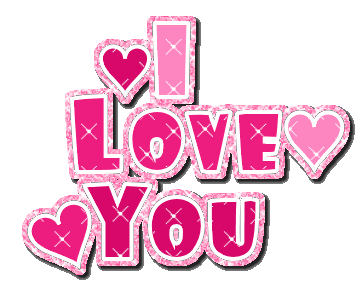The Infectious Charm Of "I Love, I Love, I Love, I Love, I Love": From Lyrics To Cultural Phenomenon
In the vast ocean of internet trends and viral snippets, certain phrases manage to latch onto our collective consciousness and refuse to let go. One such phrase, a simple yet profoundly resonant string of words, has captured hearts and minds across social media platforms: "I love, I love, I love, I love, I love." It’s a phrase that, upon hearing, often brings a smile, a nod of recognition, or even an involuntary hum. But where did this catchy, repetitive declaration of affection originate, and why has it become such a pervasive part of our digital lexicon?
This isn't just a random sequence of words; it's a cultural artifact, born from music and amplified by the internet's unique ability to transform sounds into shared experiences. Let's dive into the journey of "I love, I love, I love, I love, I love" and explore its undeniable charm.
The Melodic Roots: Malcolm Todd's "Chest Pain"
For many, the first encounter with this iconic phrase was through the soulful and somewhat melancholic tune of Malcolm Todd's "Chest Pain." The song itself, a blend of indie pop sensibilities with a touch of raw emotion, features the repetitive chorus that has become so recognizable. The lyrics clearly state:
- "I love, I love"
- "I love, I love, I love"
- "I love, I love, I love"
This repetition within the song isn't just a lyrical filler; it serves to emphasize a deep, perhaps overwhelming, feeling of love or attachment. Malcolm Todd's delivery imbues the phrase with a sense of yearning and sincerity, making it incredibly relatable to listeners navigating their own complex emotions. The song's popularity, evident from its streams and downloads, laid the groundwork for the phrase to escape the confines of the track and embark on its own viral journey.
The Meme Machine: Repo Singing and TikTok Takeover
While Malcolm Todd's "Chest Pain" provided the original audio, the internet, particularly TikTok, was the catalyst that propelled "I love, I love, I love, I love, I love" into meme superstardom. The phrase found a new life through the "Repo Singing Original / Repo Singing i love i love Meme | R.E.P.O" phenomenon. This specific meme often features a distinctive, almost operatic vocal rendition of the phrase, sometimes with a humorous or exaggerated twist.
TikTok, with its short-form video format and emphasis on trending sounds, proved to be the perfect breeding ground for this phrase. Users began incorporating the sound into a myriad of videos, transforming its original context into something entirely new. We see evidence of this widespread adoption:
- TikTok videos like Vivi (@macchiatoel)'s, simply titled “I love I love I love I love I love.” accompanied by the "original sound - stayzy."
- Echoera (@echoeramp4)'s video, boasting nearly a million likes and thousands of comments, featuring "i love, i love, i loveee #ilove #chestpain #lyric #tradução #letra #tipografia #vira #vir #lyricsedit." This highlights how the phrase is directly tied back to its lyrical origin while being used in new visual contexts.
The beauty of its virality lies in its versatility. The phrase can be used:
- Sincerely: To express genuine affection for a pet, a hobby, a person, or a favorite food.
- Ironically: To sarcastically declare love for something annoying or frustrating.
- Humorously: To exaggerate a feeling or to create a comedic contrast with the visual content.
- As a simple soundbite: Just because it's catchy and fits the rhythm of a video.
This adaptability is key to any successful meme, allowing it to transcend its initial meaning and resonate with a broader audience.
Beyond the Trend: The Universal Appeal of "I Love"
While Malcolm Todd's song and the subsequent memes gave "I love, I love, I love, I love, I love" its specific cultural moment, the underlying power comes from the phrase "I love" itself. Love, in all its forms, is a universal human experience. The repetition simply amplifies this core emotion.
It's interesting to note that "I Love" is a common song title and lyrical motif across various genres and artists. We see references to other songs simply titled "I Love" or featuring similar expressions:
- "I Love - I LOVE - I LOVE Official Music Video | Soulful Music Records" suggests a more traditional, soulful take on the theme.
- Other "I Love Lyrics" snippets from the provided data showcase different facets of love or relationships, from the more aggressive "Get away from me, if I was you, I'd watch what you say to me / Snakes all in my bed, wanna lay with me?" to the more romantic "Help myself / Love her / I love, love her, love her / I love her, love her / Love her, love her / Love, yeah, oh yeah / Her love can be so good to me."
These diverse lyrical contexts demonstrate how "I love" can convey a spectrum of feelings – from intense devotion and admiration to possessiveness, frustration, or even a sense of being overwhelmed by affection. The simplicity of the phrase allows it to be a blank canvas for complex emotions, and when repeated, it becomes an almost hypnotic chant that reinforces the feeling.
Why Does It Stick?
The enduring appeal of "I love, I love, I love, I love, I love" can be attributed to several factors:
- Catchiness: The rhythmic repetition is inherently memorable and easy to sing along to.
- Emotional Resonance: It taps into a fundamental human emotion that everyone understands, even if the context varies.
- Simplicity: It's easy to understand, reproduce, and adapt for various purposes.
- Viral Loop: Its presence in popular songs and subsequent memeification on platforms like TikTok creates a self-reinforcing cycle of exposure and adoption.
- Ambiguity: The phrase itself is open to interpretation, allowing users to project their own feelings and humor onto it.
It's a testament to the power of a simple phrase, when delivered with the right musicality and amplified by the right platforms, to become a widespread cultural phenomenon. It transcends language barriers and connects people through a shared, albeit sometimes humorous, expression of affection.
Conclusion
From the poignant lyrics of Malcolm Todd's "Chest Pain" to the playful and diverse world of TikTok memes, the phrase "I love, I love, I love, I love, I love" has cemented its place in contemporary pop culture. It serves as a perfect example of how music, internet trends, and universal human emotions intertwine to create something truly infectious. Whether you hear it in a song, see it in a viral video, or find yourself humming it subconsciously, this simple declaration of love, repeated five times over, continues to resonate and bring a little extra charm to our digital lives.

I love you i love you very much gif i love you love you i love you very

I Love You Gif GIF - I love you gif - Discover & Share GIFs

ᐅTop143+ I Love You GIF, Making Love GIF & Images